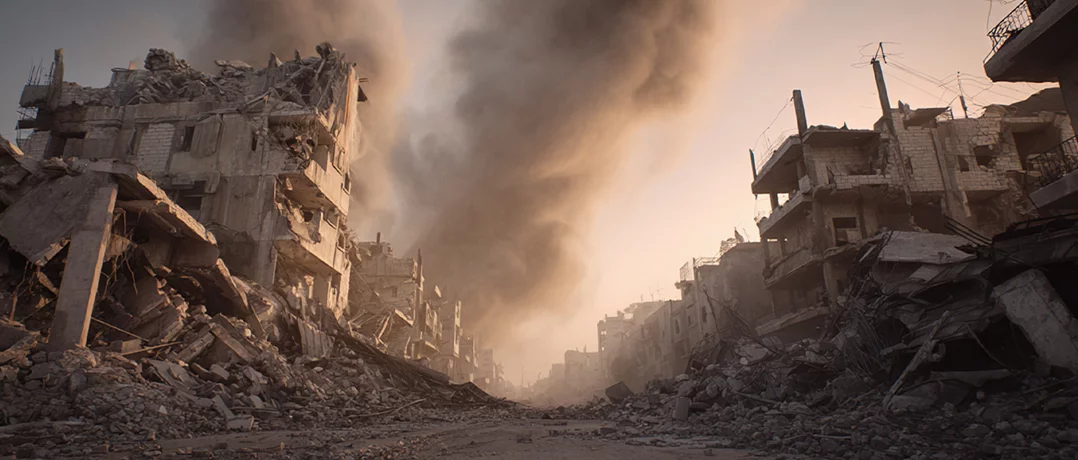Israel is escalating tensions in Lebanon, Syria, and Gaza, signaling a potential multi-front conflict.
Can the region’s ceasefire be held?

In a significant escalation both on the ground and politically, Israeli Prime Minister Benjamin Netanyahu is sending increasingly forceful signals, while redrawing the lines of confrontation in Tel Aviv’s neighboring countries.
This shift reflects what some analysts describe as a new phase of escalation, suggesting that Israel may be preparing for a broader and more sustained confrontation.
Intensified strikes in southern Lebanon
In recent days and weeks, Israel has further ramped up its attacks in southern Lebanon, targeting what it claims are infrastructures related to Hezbollah. Its military activities have not only been limited to the Iranian-backed group, but have also extended to include Palestinian factions, most notably being Hamas.
Israel’s policies entailed issuing hostile rhetoric against Hezbollah and Lebanese authorities (regarding both the military and political apparatus), declaring various evacuation orders for certain villages in the south, as well as bombing critical infrastructure (military and even civilian ones) with regards to both Hezbollah and Palestinian armed factions in the country. Just recently, the Israel Defense Forces (IDF) heavily criticized the Lebanese army and government for what it perceived as negligence and postponement concerning disarming military factions in Lebanon. The Israeli army also intensified its strikes, even targeting a Hamas training facility in the Ein El Hilweh Palestinian Refugee Camp (PRC) in Sidon, sparking local outrage.
These strikes are not just military moves, but rather serious political messages. The wave of bombings is a deliberate message to the Lebanese state itself, especially to the government in Beirut that has struggled to assert control over armed groups. Israel is pressuring Lebanon, warning that its tolerance for non-state armed factions may have limits.
Meanwhile, the recent United States’ backlash concerning the Lebanese Armed Forces (LAF) statement (targeting only Israel, without any mention of Hezbollah’s violations) has exacerbated the current situation. Analysts believe that American policy towards Lebanon could shift completely, taking a firmer, and even a pressuring, stance against an army it has long viewed as a strategic ally in the Middle East.
Netanyahu’s bold and provocative tour in southern Syria
At the same time, Netanyahu, accompanied by Defense Minister Israel Katz, made a rare and symbolic tour in southern Syria, which Damascus strongly condemned as a violation of its sovereignty.
According to the Israeli public broadcaster, the visit signals that Israel may escalate its involvement deeper into Syrian territory. Netanyahu declared that protecting the Druze community is a top priority, suggesting that Israel might further entrench its presence in the area.
However, Israel’s remaining presence, and its solidification, represents a strategic and security matter for Tel Aviv, linking the fronts in Lebanon and Syria into a more unified strategic posture. It has long argued that controlling the Golan Heights is vital and necessary for Israel’s security and safety, affirming that it would not hand over this strategic territory. Indeed, as the promising security talks between the two seem to have been stalled (or even collapsed), Isarel would most likely seek to escalate not only its presence, but also its military activities in the area to force a de facto situation on the ground and bring Damascus to the negotiating table in a much more suitable and lenient manner.
Meanwhile, Shin Bet (the Israeli security agency) and Israel’s police announced the arrest of several individuals, including reservist soldiers and civilians in northern Israel, on suspicion of attempting to smuggle weapons from Syria. The alleged smuggling operation involved explosives, RPGs, rifles, and ammunition, reportedly transported through the village of “Hajar” near the Golan Heights. Israel believes that parts of Lebanon and Syria are being used to build and sustain armed capabilities that threaten its security, and that both local and external actors are implicated.
Gaza ceasefire hanging by a thread
Ever since the ceasefire in Gaza began, both sides have continuously violated the peace plan’s terms. Israel continued striking the Strip, while Hamas has remained staunchly opposed to surrendering its arms.
This scenario resembles the Lebanese scene, where the IDF pursues its military activities without any resistance, while Hezbollah continues to refuse its disarmament (which the November 2024 cessation of hostilities called for).
Meanwhile, the recent United Nations Security Council Resolution which agreed on the US proposal to establish an international military force in the Gaza Strip has been welcomed by the Palestinian Authority, but rejected completely by Hamas. Such pessimistic developments have prompted analysts to suggest that the relative calm in the Strip could not last as many hoped it would.
Alas, putting these developments together, Israel seems to be making a deliberate transition toward a broader, multi-front confrontation. Rather than isolating its operations, Tel Aviv appears to be integrating them into a cohesive regional policy. Could the long-awaited peace and stability in the region face yet another deadly challenge?



